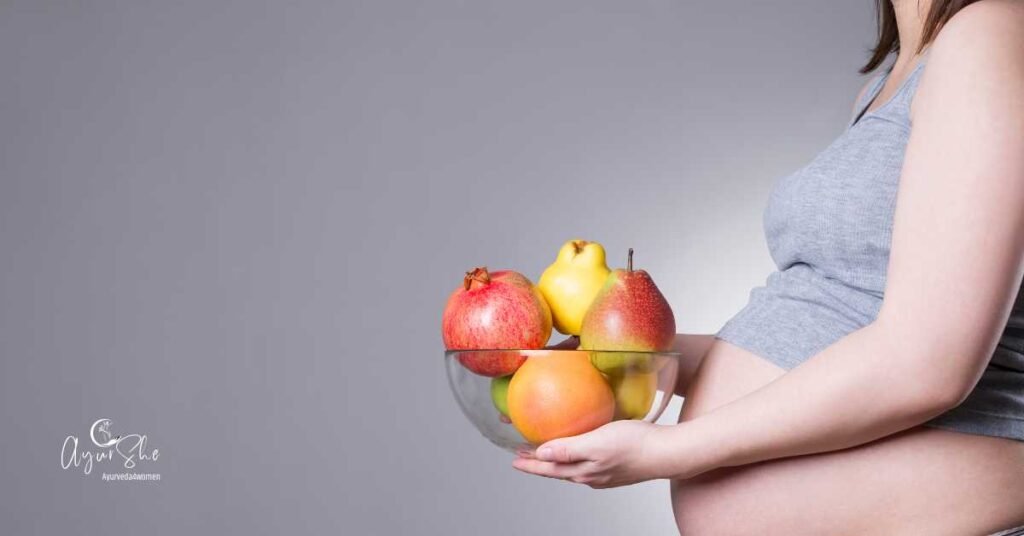Women are 5–8× more likely than men to experience thyroid disorders, particularly during life stages of hormonal flux (puberty, postpartum, perimenopause). Thyroid hormones (T3, T4) orchestrate metabolism, temperature, mood, skin–hair health, fertility, and menstrual cycles. When they drift low (hypothyroidism) or high (hyperthyroidism), the entire mind–body network feels it.
Modern endocrinology offers precise diagnostics (TSH, free T4/T3, thyroid antibodies, ultrasound) and effective medications (levothyroxine for hypo-; antithyroid drugs for hyper-). Ayurveda complements this by correcting the terrain: balancing Doṣas (Vāta–Pitta–Kapha), restoring Agni (metabolic fire), clearing Āma (metabolic waste), nourishing Dhātus (tissues), and rebuilding Ojas (resilience). This review provides a practical, step-by-step plan for both hypo- and hyperthyroidism—including dosages, diet, lifestyle, and a 12-week protocol—without replacing essential medical care.
Part I — Thyroid Basics: Modern Overview
Functions
- Regulates basal metabolic rate, body temperature.
- Modulates cardiovascular, GI motility, lipid/glucose metabolism.
- Governs menstrual regularity, ovulation, pregnancy maintenance.
- Impacts mood, cognition, sleep, skin and hair cycles.
Women-centric risk windows
- Postpartum (thyroiditis), perimenopause, autoimmune predisposition, iodine deficiency/excess, stress.
Red flags (seek medical care)
- Neck swelling, palpitations, unexplained weight change, tremor, heat/cold intolerance, amenorrhea/menorrhagia, depression/anxiety, infertility, recurrent miscarriage.
Part II — Hypothyroidism (Primary focus: Hashimoto’s & subclinical hypo)
Typical features
- Fatigue, cold intolerance, weight gain, constipation, dry skin/hair fall, heavy/irregular menses, low mood/brain fog, elevated LDL.
Modern diagnosis
- ↑ TSH, ↓ Free T4 (overt); ↑ TSH with normal FT4 (subclinical).
- Anti-TPO / Anti-TG antibodies suggest autoimmunity (Hashimoto’s).
- Ultrasound: hypoechoic, heterogeneous gland.
Modern treatment snapshot
- Levothyroxine titrated to normalize TSH/FT4.
- Iron, B12, vitamin D repletion as indicated.
- Address lipids, weight, insulin resistance.
Part III — Hyperthyroidism (Graves’ disease, toxic nodules, thyroiditis)
Typical features
- Weight loss despite appetite, heat intolerance, sweating, palpitations, tremor, anxiety/irritability, insomnia, loose stools, oligomenorrhea.
- Graves’ may feature goiter and ophthalmopathy.
Modern treatment snapshot
- Antithyroid drugs (e.g., methimazole), beta-blockers for symptom control; in select cases radioiodine or surgery.
- Monitor LFTs, CBC, thyroid function regularly.
Part IV — Ayurveda’s Lens
Mapping to classical concepts
- Hypothyroid terrain ≈ Kapha-Vāta vr̥ddhi + Mandāgni (sluggish metabolism), Āma accumulation; Meda dhātu (adipose) and Rasa/Rakta sluggishness.
- Hyperthyroid terrain ≈ Pitta-Vāta prakopa (heat, speed), Tikshṇāgni (overactive fire), drying of tissues (Ojas depletion).
- Goiter aligns with Gandamālā / Galaganda; autoimmune angle relates to Ojas-Agni mismatch, Rakta duṣṭi.
Therapeutic principles
- Deepana–Pācana (ignite Agni, digest Āma).
- Doṣa śamana: Hypo → reduce Kapha & stabilize Vāta; Hyper → pacify Pitta & anchor Vāta.
- Rasāyana to rebuild resilience, cognition, hair/skin.
- Srotoshodhana (unblock channels) to restore hormone–tissue dialogue.
- Manas-prasādana (stress axis reset).
Part V — Remedies & Formulations (with exact dosages)
Adult general ranges; personalize with a clinician—especially in pregnancy, cardiac disease, hepatic/renal impairment, or when on thyroid/antithyroid drugs. Never discontinue prescribed medicines on your own.
A) Hypothyroidism Protocol
1) Foundational stack (8–12 weeks)
| Remedy | Why it helps | Dose & How-to |
|---|---|---|
| Kanchanār Guggulu | Classical for Galaganda/Gandamālā; lymphatic-thyroid milieu | 1 tab (500 mg) BID after meals |
| Punarnavā Maṇḍūr | Anti-edema, improves hemoglobin & liver-gut axis | 250–500 mg BID after meals |
| Trikatu Churna (ginger–black pepper–long pepper) | Deepana–Pācana (Agni up, Āma down) | ¼–½ tsp in warm water BID before meals (avoid if reflux; switch to Hingvāstaka ½ tsp with food) |
| Guduchi (Tinospora) | Immunomodulator (Hashimoto terrain), anti-inflammatory | 500 mg cap BID after meals |
| Ashwagandha | HPA balance, energy, mood, hair; may support T4→T3 conversion milieu | 3–5 g with warm milk HS or 500 mg cap BID |
Optional (phenotype-based)
- Guggulu Tikta Ghrita (if Kapha-Meda dominant with joint stiffness): ½–1 tsp with warm water AM for 4–6 weeks.
- Shilajit 250 mg OD (metabolic fatigue) under guidance.
2) Micronutrients (modern-aligned, lab-guided)
- Selenium 100–200 μg/day (Hashimoto’s; consult doctor).
- Iron if ferritin low; B12, Vitamin D repletion per labs.
- Iodine: ensure sufficiency—avoid excess (particularly in autoimmune disease).
3) Diet for hypo (Kapha-Vāta pacifying; Agni-kindling)
- Favor: warm, light, spiced meals; mung dal khichdi; millets/old rice; lightly sautéed veg (bottle gourd, zucchini, leafy greens).
- Proteins: mung, masoor, paneer at lunch, soaked almonds/sesame; ~1.0–1.2 g/kg/day.
- Spices: cumin, coriander, fennel, ginger, black pepper; turmeric culinary doses.
- Limit: sugar/ultra-processed, deep-fried, cold/damp foods, excess dairy at night.
- Goitrogens: crucifers ok if cooked; avoid large raw amounts daily.
4) Lifestyle
- Daily movement: 30–45 min brisk walk + light strength 2–3×/wk.
- Abhyanga (warm sesame oil self-massage) 10–15 min, 3–5×/wk.
- Prāṇāyāma: Nādi Śodhana 7–10 min + Bhrāmarī 3–5 min.
- Sleep: 7–8 h, lights out by 10:30 pm.
B) Hyperthyroidism Protocol
Integrate with antithyroid therapy; herbs aim to cool Pitta, anchor Vāta, soothe heart–nerves, and protect gut–liver.
1) Foundational stack (6–12 weeks; monitor medically)
| Remedy | Why it helps | Dose & How-to |
|---|---|---|
| Saraswatāriṣṭa | Calms anxiety, improves sleep/cognition | 15–20 ml with equal water BID after meals |
| Pravāla Piṣṭi (coral calcium) | Cooling Pitta, palpitations/heat | 125 mg with ghee OD–BID (under supervision) |
| Arjuna (Terminalia arjuna) | Cardio-support (palpitations) | 500 mg cap BID after meals |
| Brahmi (Bacopa) | Calms mind, reduces hyper-arousal | 250–500 mg cap BID |
| Jatāmānsī | Sleep depth, anxiety | 500–750 mg at bedtime with warm water |
If diarrhea/heat prominent (Pitta prakopa)
- Amlakī 500 mg BID, Mustā (Cyperus) 500 mg BID.
- Avipattikar Churna 3 g HS for acid heat.
Avoid stimulants (Trikatu, strong guggulu) during active hyper-.
2) Diet for hyper (Pitta-Vāta pacifying; cooling)
- Favor: warm but not spicy; ash gourd, bottle gourd, ridge gourd, pumpkin; ghee (1–2 tsp/day); rice/wheat; moong dal; coriander–fennel–cumin infusions.
- Include: pomegranate, pears; coconut water at room temp.
- Limit/Avoid: chilies, vinegar/pickles, fermented hot foods, coffee/energy drinks, alcohol, late nights, sauna/steam.
3) Lifestyle
- Gentle yoga (no hot yoga), Viparita Karaṇi, Supta Baddha Koṇāsana, Śavāsana.
- Prāṇāyāma: Śītali/Śitkari (cooling), Nādi Śodhana.
- Short afternoon rest if fatigued; strict sleep hygiene.
Part VI — Panchakarma (when, what, and when not)
- Hypothyroid Kapha-dominant: Udvarṭana (herbal dry rub) weekly; Virechana (gentle purgation) cycles for Āma; Basti (matra basti with Daśamūla / Kṣīra-Bala taila) to anchor Vāta (esp. constipation, low back ache).
- Hyperthyroid Pitta-dominant: Mridu Virechana (cooling purgation) post-stabilization; Śirodhārā for anxiety/insomnia.
- Avoid strong shodhana during uncontrolled hyperthyroidism or in frail states.
Part VII — A 12-Week Integrative Program (Templates)
A) Hypothyroidism (Hashimoto’s/subclinical) — 12 weeks
Weeks 1–4 (Reset & Ignite Agni)
- Kanchanār Guggulu 500 mg BID, Punarnavā Maṇḍūr 250–500 mg BID, Guduchi 500 mg BID.
- Trikatu ¼–½ tsp BID before meals (or Hingvāstaka if reflux).
- Ashwagandha 500 mg BID (or 3–5 g HS with milk).
- Diet: warm, spiced, protein-adequate; walk 30–45 min/day.
Weeks 5–8 (Build & Balance)
- Continue; add Amla 500 mg BID; if weight/inches stubborn, Guggulu Tikta Ghrita ½ tsp AM for 4 weeks.
- Strength training 2×/wk; Abhyanga 3–5×/wk.
Weeks 9–12 (Consolidate & Reassess)
- Maintain core stack; taper Trikatu if stools/heat increase.
- Check labs with your physician; titrate levothyroxine as advised (Ayurveda supports terrain, not the dose decision).
B) Hyperthyroidism (on antithyroid drugs) — 12 weeks
Weeks 1–4 (Cool & Calm)
- Saraswatāriṣṭa 15–20 ml BID, Arjuna 500 mg BID, Brahmi 250–500 mg BID, Jatāmānsī 500–750 mg HS, Amla 500 mg BID.
- Diet: Pitta-cooling; avoid stimulants/heat.
Weeks 5–8 (Stabilize & Restore)
- Continue; add Pravāla Piṣṭi 125 mg OD–BID with ghee under supervision if heat/palpitations persist.
- Gentle yoga + Śītali breathing daily.
Weeks 9–12 (Consolidate & Re-check)
- Maintain; review TSH/FT4 with endocrinologist to adjust antithyroid meds.
Part VIII — Women’s Thyroid & Reproductive Health
- Fertility/LPD/PCOS: Hypothyroid correction improves ovulation, luteal stability; integrate with Shatavari 5 g BID, Phala Ghṛita 1 tsp AM if attempting conception (with OB guidance).
- Pregnancy: Tight TSH targets; levothyroxine dose often increases. Herbal choices must be physician-approved (avoid guggulu/strong bitters).
- Postpartum: Screen for postpartum thyroiditis if mood swings/extremes of fatigue or milk supply changes.
- Perimenopause: Thyroid symptoms can mimic menopausal ones—test before assuming it’s “just menopause.”
Part IX — Safety, Interactions, Practical Tips
- Never stop or alter levothyroxine/antithyroid drugs without your doctor.
- Space herbs and thyroid meds by 3–4 hours (especially iron, calcium, fiber, ghee/ghrita) to avoid absorption issues.
- Iron/Calcium: take later in the day, not with morning levothyroxine.
- Liver: monitor if on antithyroid drugs; keep Ayurveda gentle/cooling.
- Autoimmune: prefer Guduchi, Amla, Ashwagandha (if not hyper); avoid mega-iodine trends.
- Goiter/nodules: ultrasound and endocrinology plan first; Kanchanār Guggulu is adjunct only.
Part X — FAQs (SEO Boosters)
Q1. Can Ayurveda “cure” Hashimoto’s?
Ayurveda aims to reduce antibody activity and symptoms by improving Agni, gut–immune harmony, and stress axis. Many women feel better, but medication may still be required; goal = optimal labs + vibrant living.
Q2. Is Ashwagandha safe with thyroid meds?
Often helpful in hypo- (energy/mood/sleep). Use cautiously in hyper-, and always with physician awareness.
Q3. Do I need to avoid all cruciferous vegetables?
No—cook them well and rotate; raw daily large amounts can hinder iodine use. Balance is key.
Q4. What about gluten-free diets in Hashimoto’s?
Helpful for some, especially with celiac/gluten sensitivity. Trial 8–12 weeks with nutritionist oversight.
Q5. Best morning routine for hypo-energy?
Warm water + gentle stretches + Nādi Śodhana → protein-rich breakfast → AM sunlight for circadian reset.
Conclusion
Thyroid disorders in women are high-impact and highly manageable. Modern medicine gives the steering wheel—accurate tests and effective drugs—while Ayurveda paves the road by steadying metabolism (Agni), clearing Āma, balancing Doṣas, nourishing Dhātus, and restoring Ojas.
For hypothyroidism, a disciplined Kanchanār Guggulu + Guduchi + Ashwagandha + Agni-kindling diet and routine can transform energy, mood, hair/skin, and weight trajectories—alongside correctly dosed levothyroxine. For hyperthyroidism, Pitta-cooling, Vāta-anchoring herbs and lifestyle soften palpitations, heat, and anxiety while antithyroid therapy restores biochemistry.




